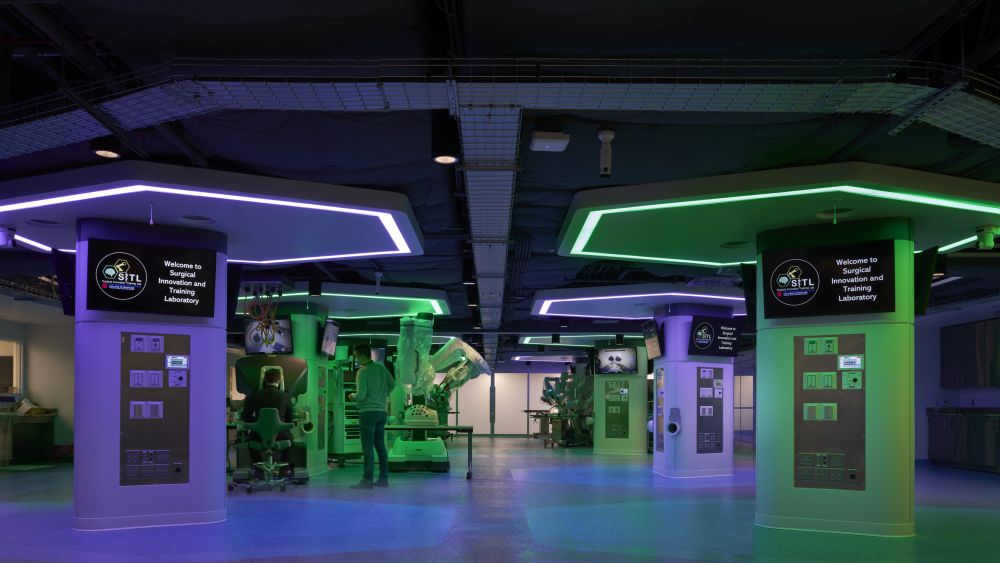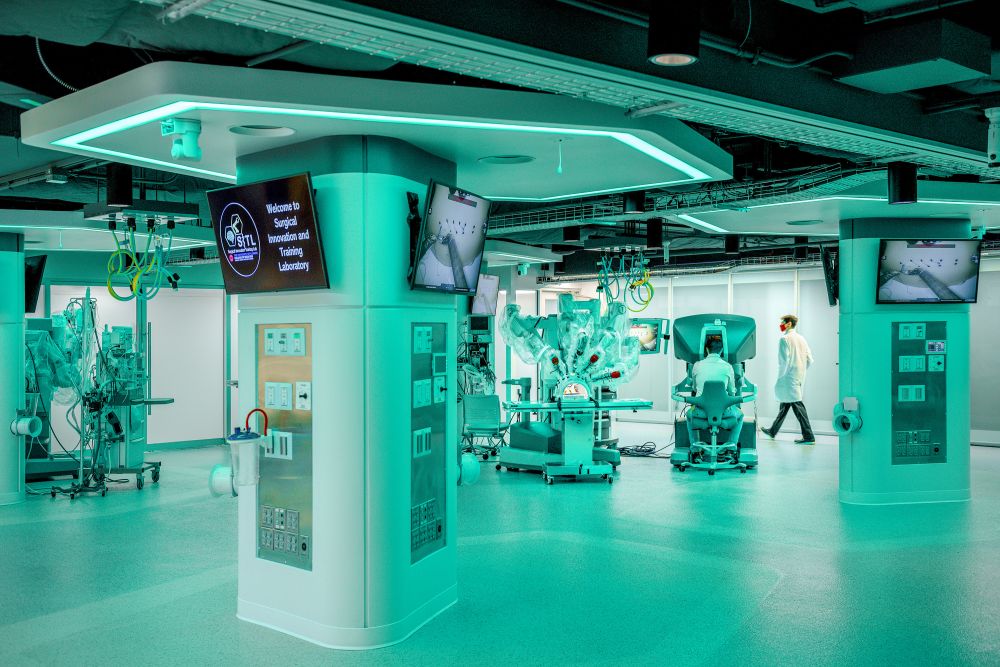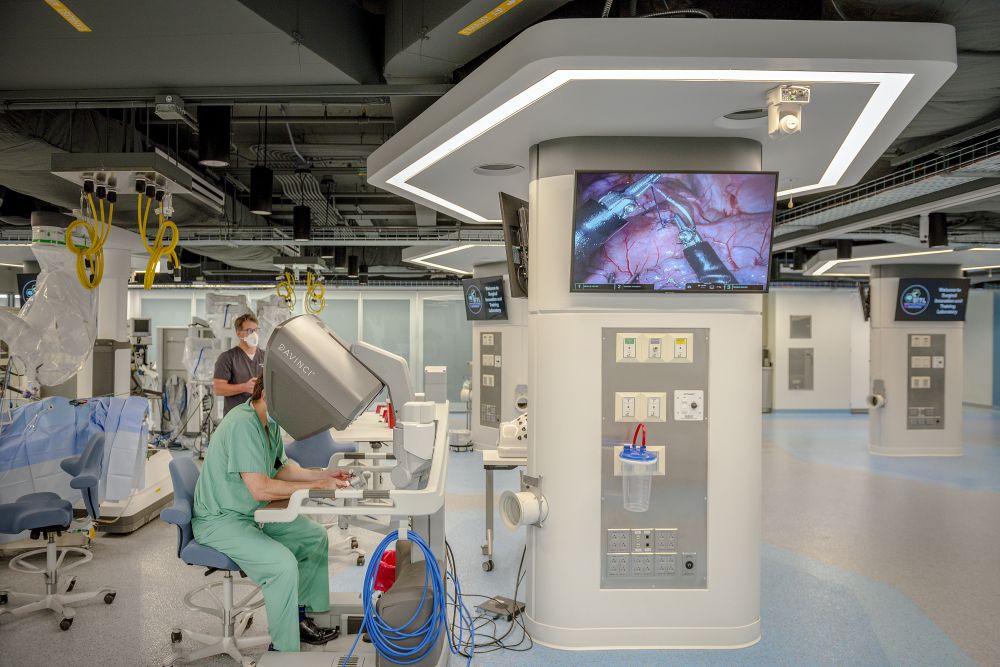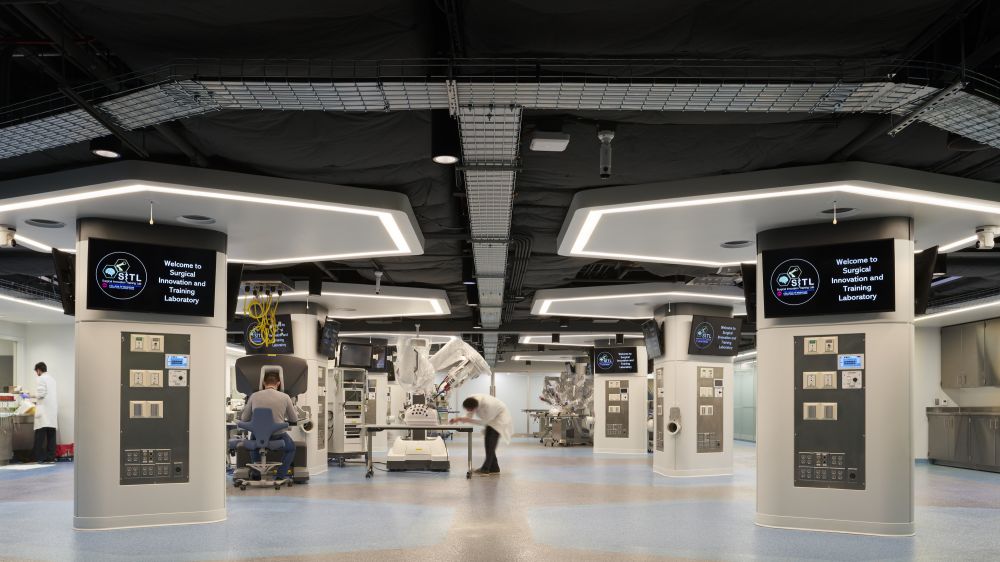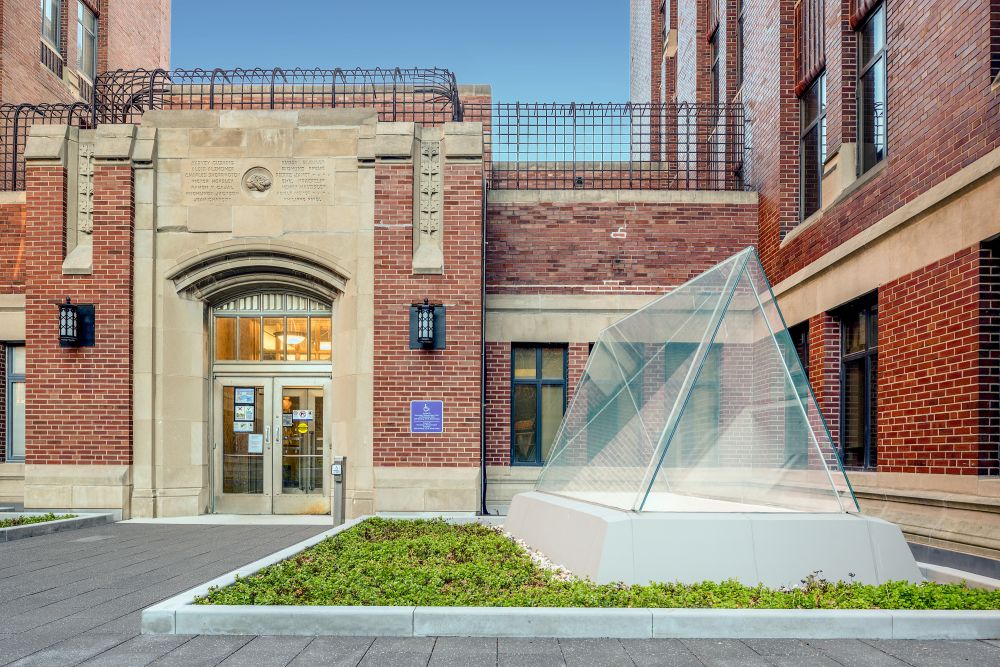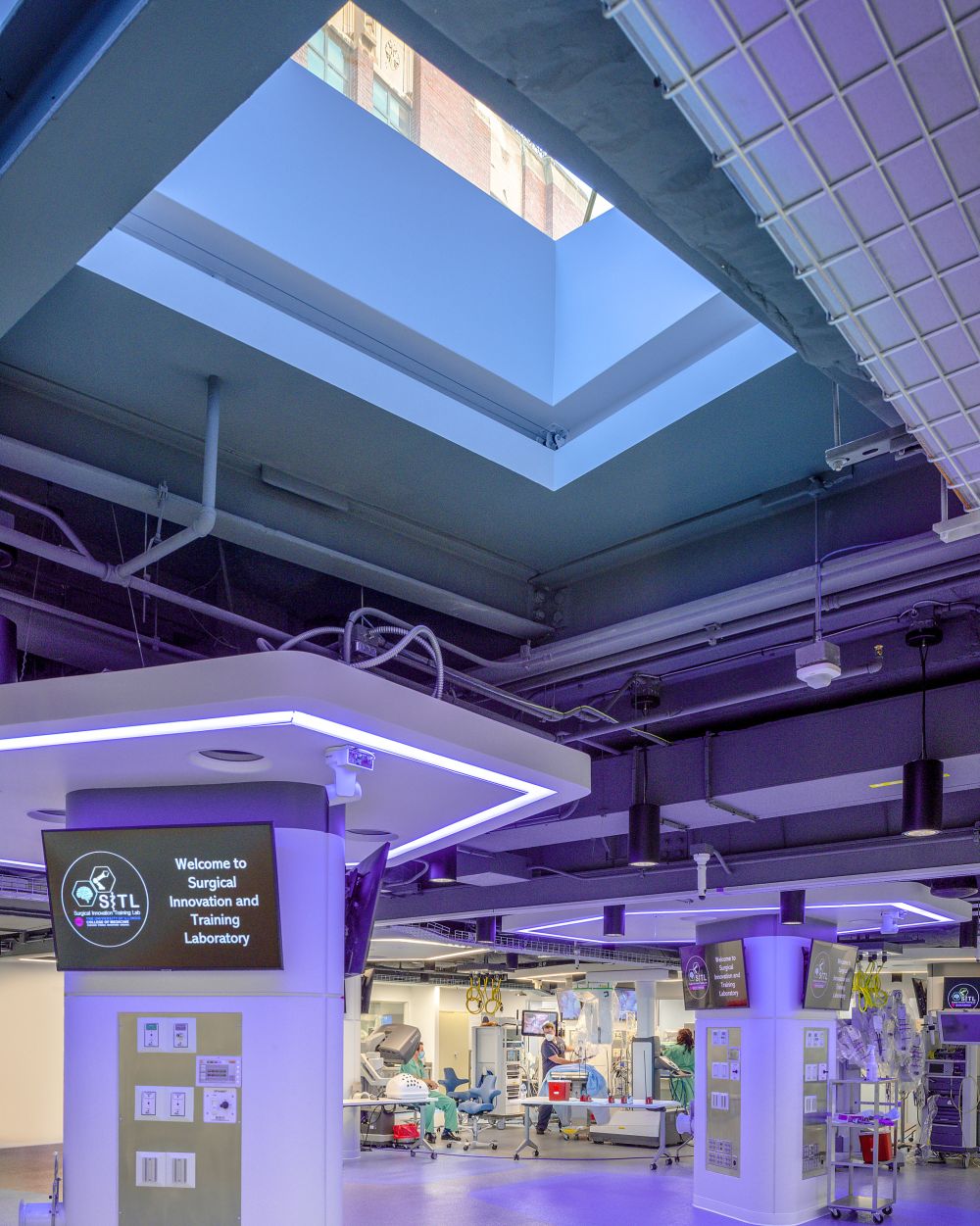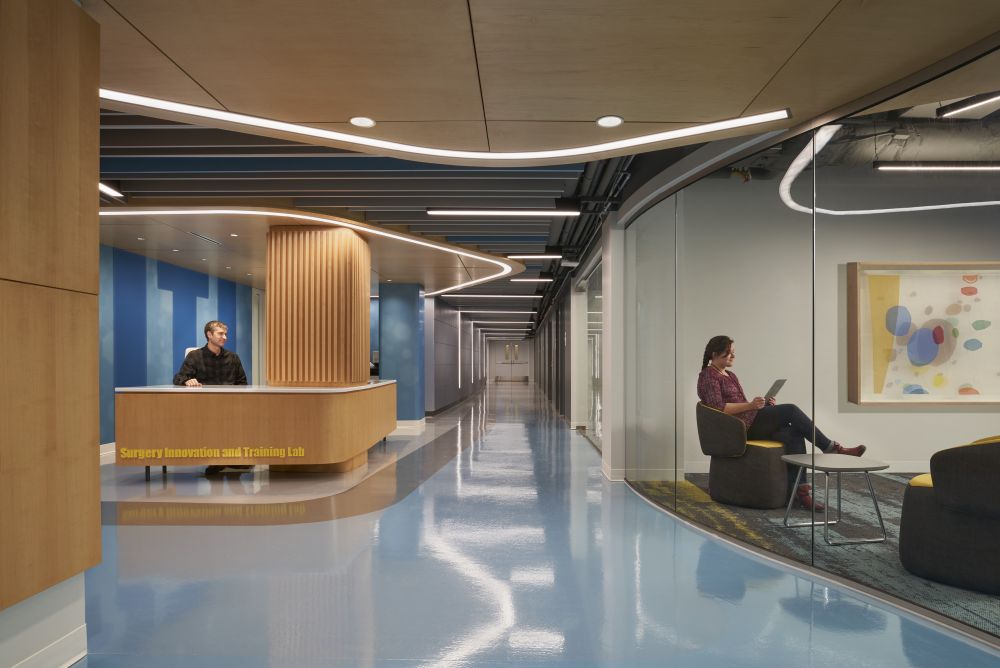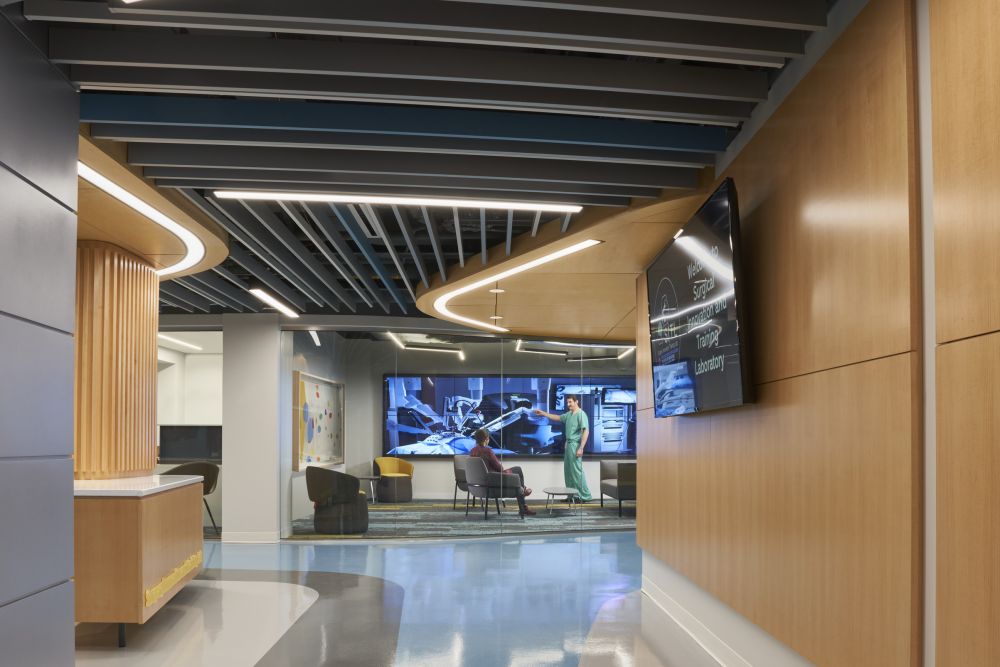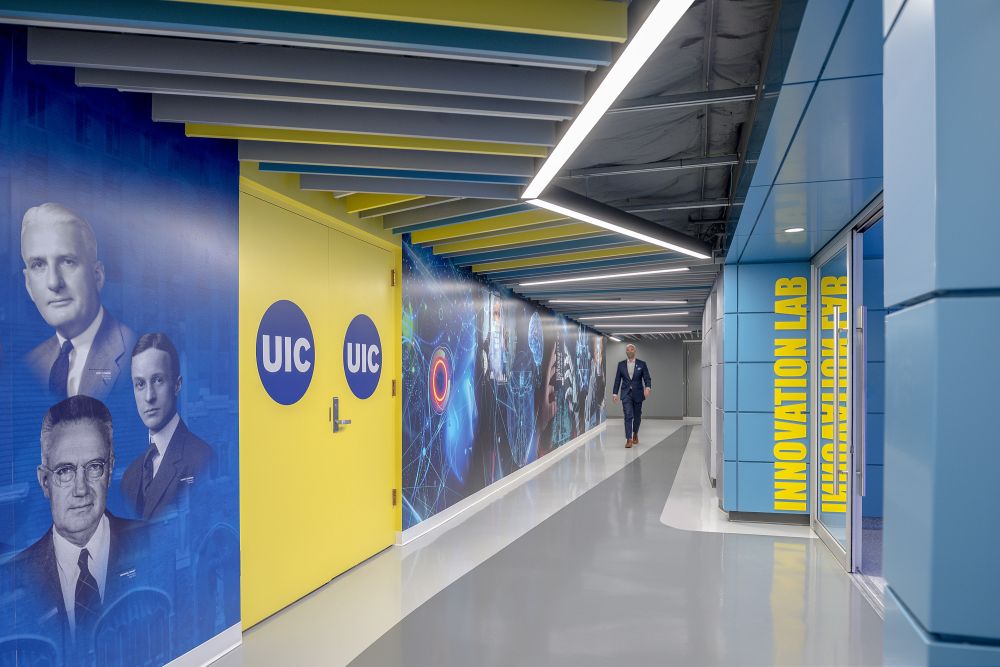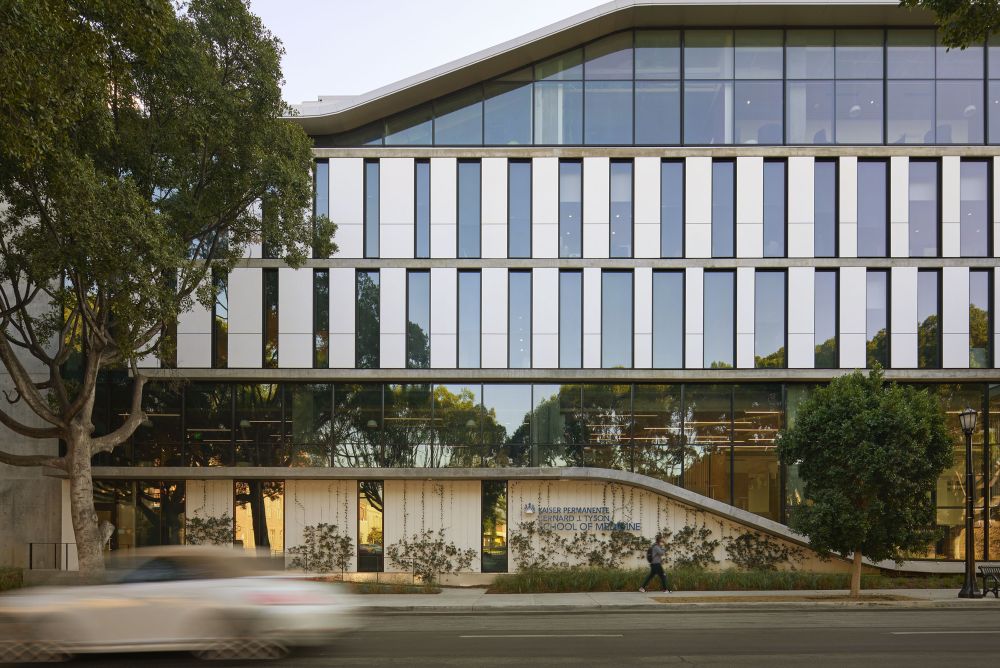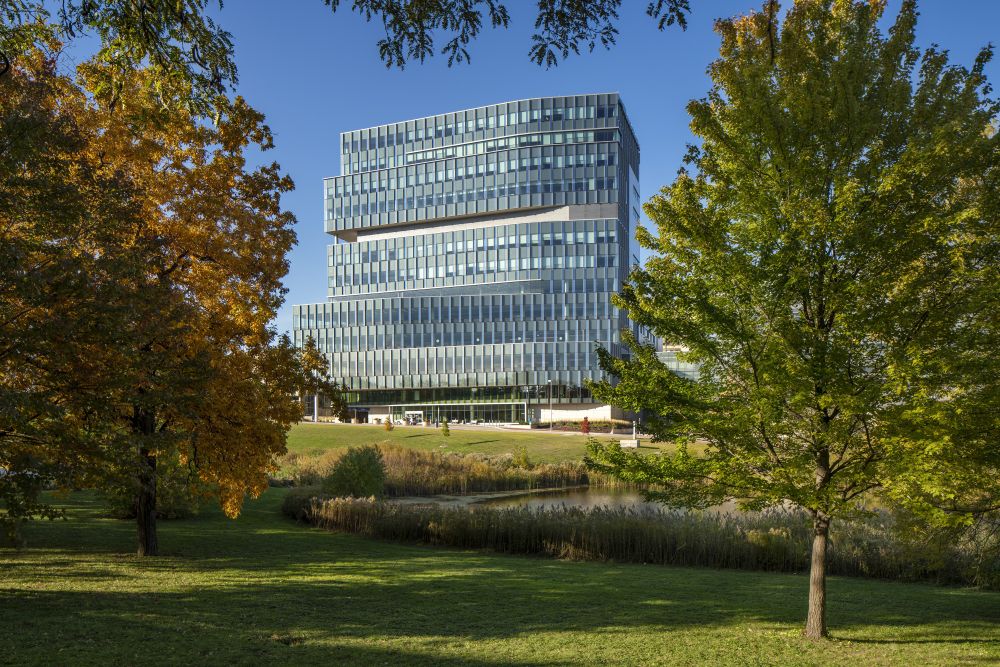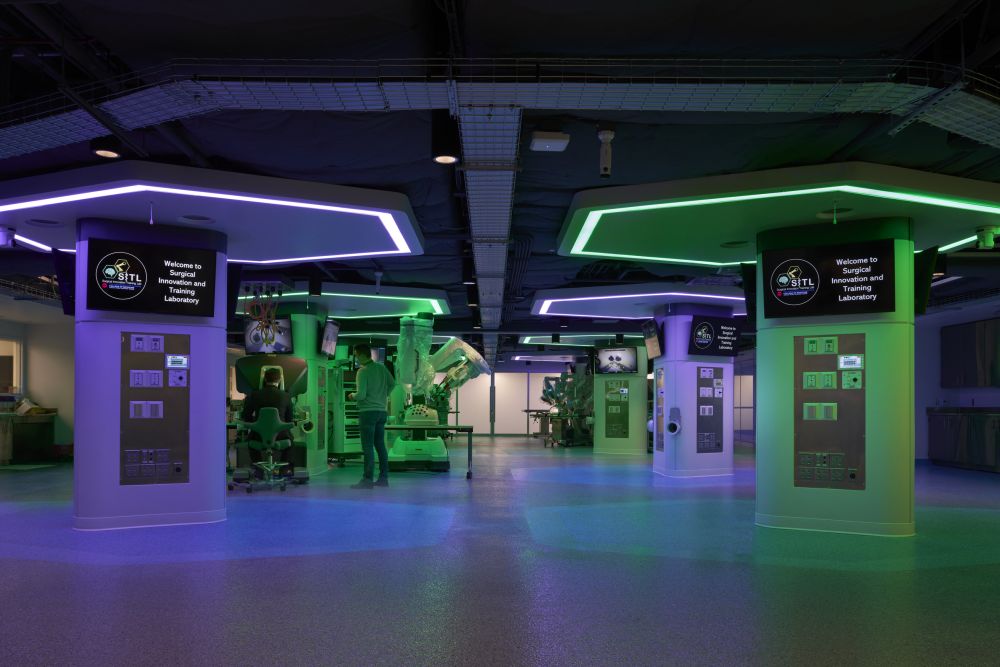Surgical Innovation and Training Laboratory
Where robotic and human innovations intertwine
- Client
- University of Illinois Chicago
- Location
- Chicago, Illinois, United States
- Size
- 17,000 square feet
- Status
- Completed
Medical innovations often take years to develop, with scientists, physicians and lab personnel toiling away on the trial-and-error process that is the scientific method. But having the right kind of physical space to develop breakthrough treatments and procedures is integral—and sometimes that space is an empty space.
The Surgical Innovation Training Lab is meant to pioneer surgeries and surgical techniques of the future. New robotic equipment is tested here, new minimally invasive techniques are perfected and new surgical settings are put to the test. Flexibility was the main design priority, so it would be easy to switch machines, procedures and backdrops. On one side of the lab there is a traditional surgical simulation area, and on the other side is a space for pure experimentation. The center space of the lab is where these two worlds collide, surrounded by support areas with conference rooms, lockers, lounges and more.
Creating a futuristic workplace in an abandoned underground basement posed another challenge. There was no outward presence of the lab on campus. Connecting the lab to nature was a priority for the lab’s founder, Dr. Pier Guilianotti, who is a world-leading robotics surgeon at UIC. Our design team wanted an unusual object that would catch the attention of people walking by. Something that would symbolize that incredible work was happening in the lab below. We drew inspiration from the Louvre, which is also underground, and designed pyramid-shaped skylights that allow those on campus a glimpse of the innovation happening below and those in the lab a window to the outside.
Testimonials
For UIC to remain a groundbreaking surgical program, this space needed to push the envelope and be capable of constant ingenuity. To ensure this wasn’t just another simulation center, our team understood collaboration and innovation requires that you integrate many different fields, in and out of medicine, to advance this innovation.
The space is helping create a new discipline called a “surgineer,” where a surgeon in training also has the skills of a clinician, computer scientist, medical technology engineer and inventor.
Traditionally, a surgeon in an operating room is just doing surgery. When surgery started crossing over with other fields, we saw some of that collaboration with other industries like robotics and AI. The Surgical Innovation Lab integrates all the fields required to advance surgery while embedding students in the process to witness and collaborate in real time.
